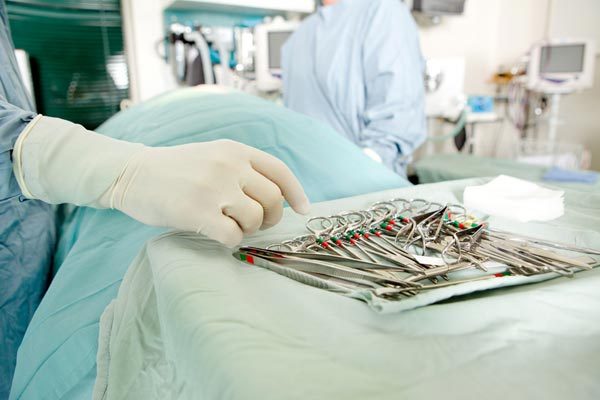Most Breast Cancer Patients Who Have Double Mastectomy Don't Need It

Many women with breast cancer who choose to have both breasts removed do so despite having the same risk of developing a new cancer in the healthy breast as most other women, according to a new study.
Removing both breasts, in a procedure called a double mastectomy, to prevent cancer is one option for women who are at high risk of breast cancer — for example, because of a gene mutation. But most cancer patients in the study who had a double mastectomy were not in this category, the researchers said.
The researchers looked at 1,447 women who had been treated for breast cancer and found that 106 women, or 8 percent, had both their affected and their healthy breasts removed.
But about 70 percent of those who removed both breasts were not at elevated risk for developing a new cancer; they had neither a BRCA gene mutation nor a strong family history of breast cancer, according to the study, published today (May 21) in the journal JAMA Surgery. [5 Signs of Gynecological Cancer Women Ignore]
"In these women, the probability of a second cancer causing them to have a health problem is remote," said study researcher Dr. Steven Katz, professor of medicine and health management and policy at the University of Michigan.
In fact, that probability is so small that even the surgery to remove the healthy breast does not lower the women's risk of death from breast cancer, Katz told Live Science.
"We are willing to remove the unaffected breast of a woman with cancer, but we would be unwilling to do so in a woman who didn't have cancer, even though in both cases they yield the same outcome, which is no benefit in terms of affecting the woman's chance of dying from breast cancer," Katz said.
Sign up for the Live Science daily newsletter now
Get the world’s most fascinating discoveries delivered straight to your inbox.
In recent years, the number of women with breast cancer who are choosing to remove both breasts out of fear that cancer might return has increased, and physicians are concerned that some of these patients are being overtreated.
However, the decision is often made at an emotional and stressful time. Patients may choose a double mastectomy in response to anxiety from their first diagnosis.
In the study, about three-quarters of patients reported being very worried that their cancer would reoccur, and those who were more worried about recurrence were more likely to have both breasts removed.
"There's a high association between your concern about and fear of recurrence, and getting the most extensive surgery," Katz said.
Still, removing the healthy breast still may be the right choice for some women, whether it be for emotional reasons, cosmetic reasons or risk reduction, Dr. Ann Partridge and Shoshanna Rosenberg of Harvard University wrote in an editorial accompanying the study.
"Not only should pros and cons of different treatment options be communicated, but there needs to be consideration of the patient’s personal circumstances and perceptions, all the while addressing anxiety and concerns about breast cancer recurrence and new primary disease," they wrote in the editorial.
About 10 percent of all women diagnosed with breast cancer are at high risk for a new cancer developing in the other breast, and are advised to consider removing both breasts. These women have mutations in the BRCA1 or BRCA2 genes, or have a mother or sister who has had breast or ovarian cancer.
In the study, 136 women were at high risk for breast cancer, and for them, having both breasts removed would lower the risk of dying from breast cancer. But only 24 percent of these women got a double mastectomy.
The rest might have chosen other options— for example, frequent screening, Katz said.
Email Bahar Gholipour. Follow us @LiveScience, Facebook & Google+. Original article on Live Science.










